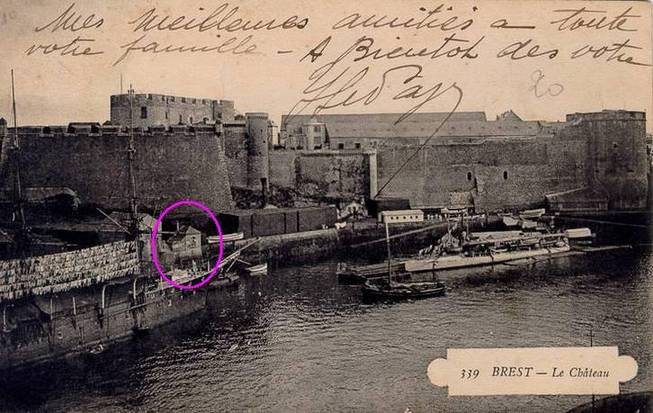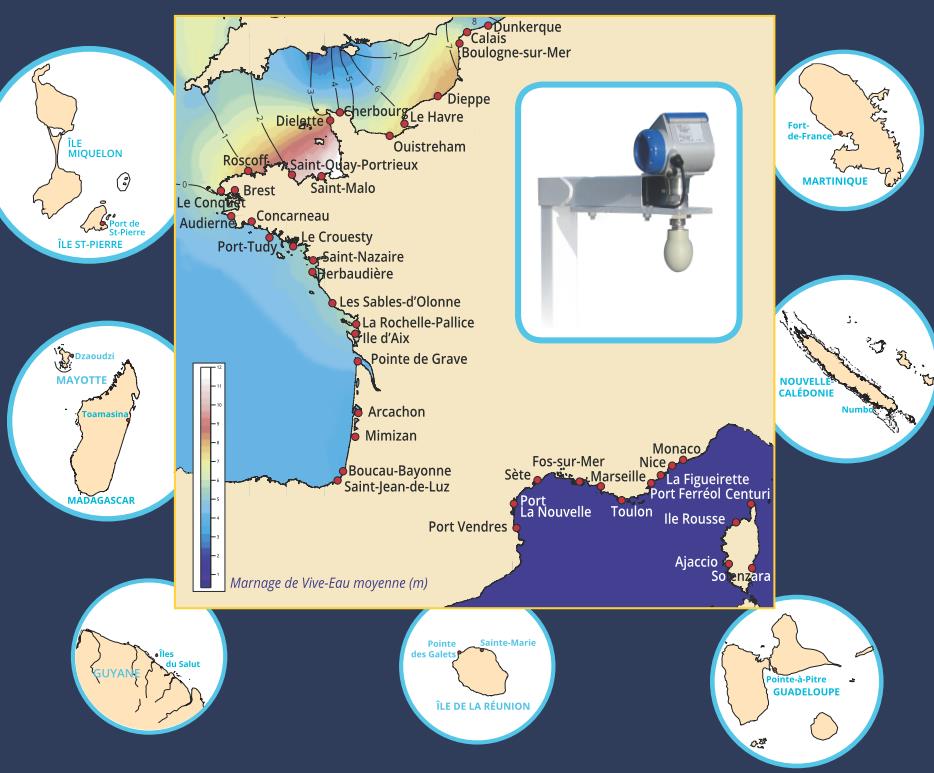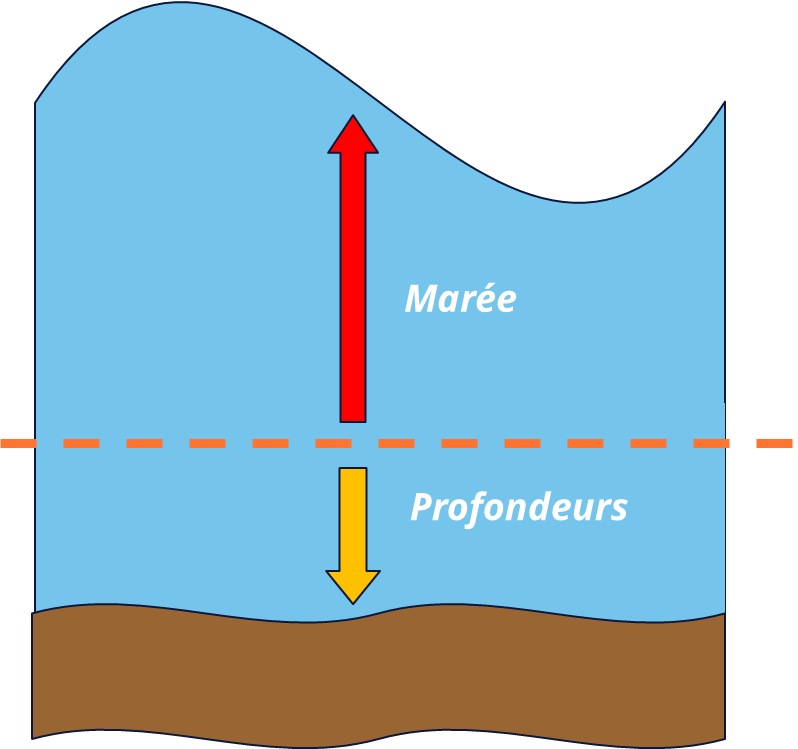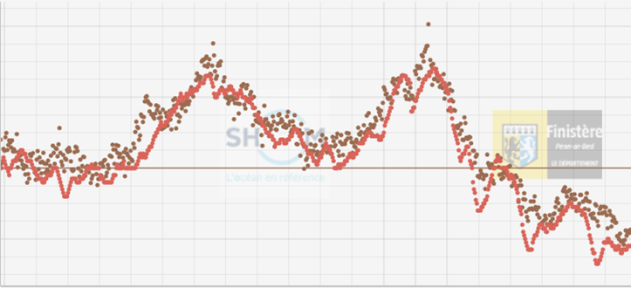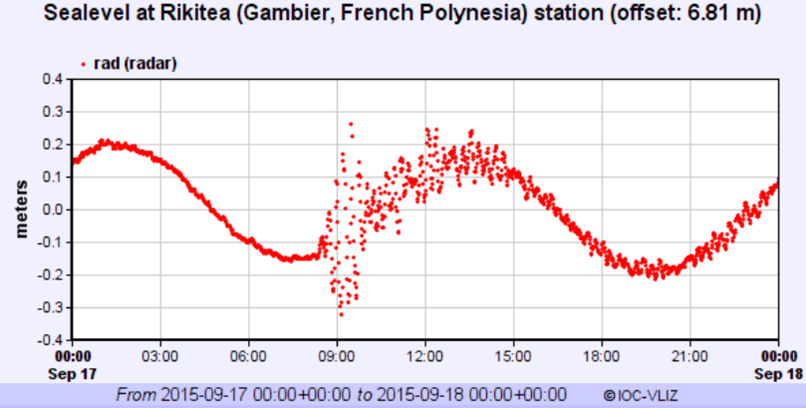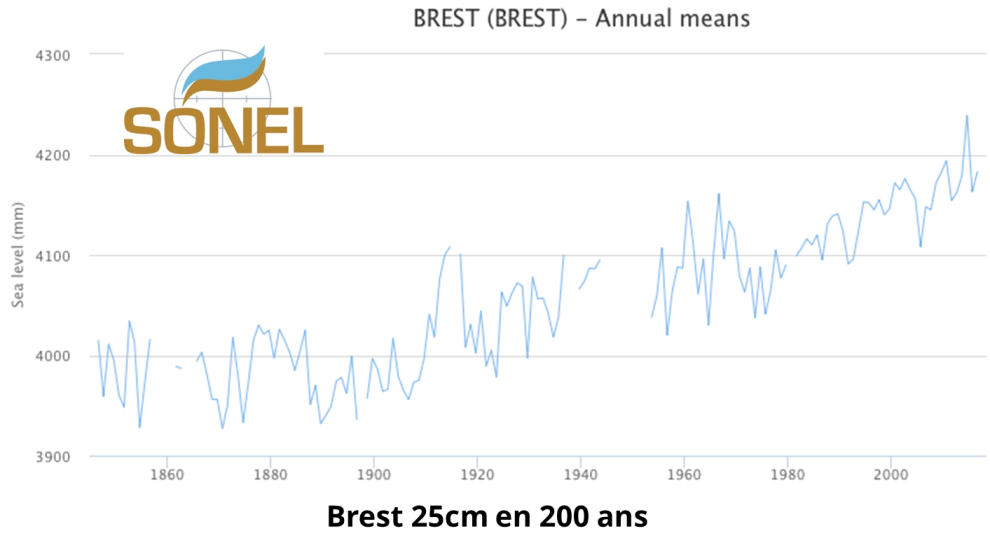Sea level
Mis à jour le 02/06/2025Observation du niveau de la mer
L’observation du niveau de la mer fait partie des activités historiques menées par le Shom et constitue encore aujourd’hui un domaine d’expertises technique et scientifique.
Historique
Les premières observations de marée de l’époque moderne ont été commanditées en France à la fin du règne de Louis XIV et s’inscrivaient dans le contexte des travaux de Newton sur la gravitation ayant fourni une base scientifique au phénomène de marée.
Un des plus anciens marégraphes du monde fut installé dans le port militaire de Brest en 1846 par Chazallon. Cet observatoire est depuis lors régulièrement entretenu et modernisé, ne s’interrompant temporairement qu’à la suite des bombardements de 1944.
Entre temps, de nombreux autres marégraphes avaient vu le jour partout dans le monde à mesure que progressait le besoin de connaitre et de comprendre l’environnement marin.
Qu’est-ce qu’un marégraphe
Un marégraphe est un instrument permettant de mesurer les variations du niveau de la mer.
Les premiers marégraphes étaient de simples échelles graduées fixées le long des quais, et sur lesquelles un opérateur relevait régulièrement la hauteur d’eau.
Au milieu du XIXe siècle sont apparus les premiers marégraphes automatiques. Ces derniers sont constitués d’un flotteur dans un puits, dont les variations au gré des marées sont retranscrites, via un système de poulies et d’engrenages, sur un feuillet de papier enroulé autour d’un tambour.
Depuis la fin du XXe siècle, les marégraphes se sont affranchis des pièces mécaniques et la plupart des appareils installés de nos jours utilisent des capteurs radar pour mesurer les variations de hauteur d’eau.
Le réseau du Shom
Au travers du réseau RONIM (réseau d'observation du niveau de la mer), le Shom opère et entretient cinquante marégraphes sur les côtes de France métropolitaine et outre-mer. Les données sont transmises en temps réel sur le portail data.shom.fr.
Pourquoi observer le niveau de la mer
L’observation du niveau de la mer intervient dans la conception de plusieurs produits du Shom : les prédictions de marée et les cartes de navigation.
-
Prédire la marée
Le Shom fournit des prédictions de marée pour la plupart des ports de France ainsi que pour de nombreux ports dans le monde. Ces prédictions nécessitent des observations : les variations de la mer observées par les marégraphes pendant au moins une année sont analysées pour en extraire des signaux élémentaires appelés des « composantes harmoniques ».
Ces composantes harmoniques possèdent une amplitude et une phase propres à chaque port, et servent à établir les prédictions.
-
Sonder les fonds marins
Une des premières étapes pour établir une carte marine consiste à réaliser un levé bathymétrique : un navire muni d’un sondeur mesure les profondeurs. Pour un même point, la profondeur sous le navire varie en fonction de la marée. Il est indispensable de mesurer cette dernière concomitamment au levé afin de retirer cette variable à la profondeur mesurée par le navire.
Au-delà de ces aspects directement liés à l’hydrographie, l’observation du niveau de la mer répond à des enjeux de surveillance et de gestion des risques maritimes et littoraux.
-
Connaissance des niveaux extrêmes
L’observation marégraphique sur une période suffisamment longue permet de calculer des probabilités associées à des événements de tempête provoquant une augmentation anormale du niveau de la mer (surcote). Sur cette base, sont établies des statistiques de niveaux extrêmes qui servent en particulier à dimensionner des ouvrages littoraux (digues, quais, pontons).
-
Vigilance vagues-submersion
En collaboration avec Météo-France, le Shom opère les simulations numériques permettant d’anticiper des événements de tempêtes et leurs effets à la côte. Les résultats de ces calculs sont à la base de la Vigilance vagues-submersion destinée à avertir les populations des dangers de submersion marine.
Les marégraphes permettent d’alimenter ces simulations et d’en corriger les paramètres si nécessaire.
-
Tsunamis
Les marégraphes du Shom sont inclus dans plusieurs réseaux de surveillance des tsunamis sur les différents océans et mers du globe.
Evénement soudain et imprévisible, un tsunami nécessite une réaction rapide des autorités. Si des simulations permettent de prédire son arrivée sur une côte, les marégraphes sont les seuls appareils capables de confirmer l’existence du tsunami, de mesurer son intensité et de permettre la levée d’alerte.
Le CEA est responsable en France du Centre national d’alerte tsunami (Cenalt).
-
Suivi du niveau moyen
Observant les variations du niveau de la mer depuis le début du XIXe siècle, les marégraphes sont des témoins uniques de l’évolution des océans.
Les enregistrements sont filtrés et transformés en niveaux moyens annuels, permettant de calculer des vitesses d’élévation du niveau marin.
Les variations en jeu étant très faibles (quelques millimètres par an), il est nécessaire de mesurer les éventuels mouvements verticaux de l’observatoire qui pourraient fausser la mesure. Ces travaux sont menés par le Shom, en coopération avec l’IGN et l’Université de la Rochelle, au travers du groupement SONEL.

